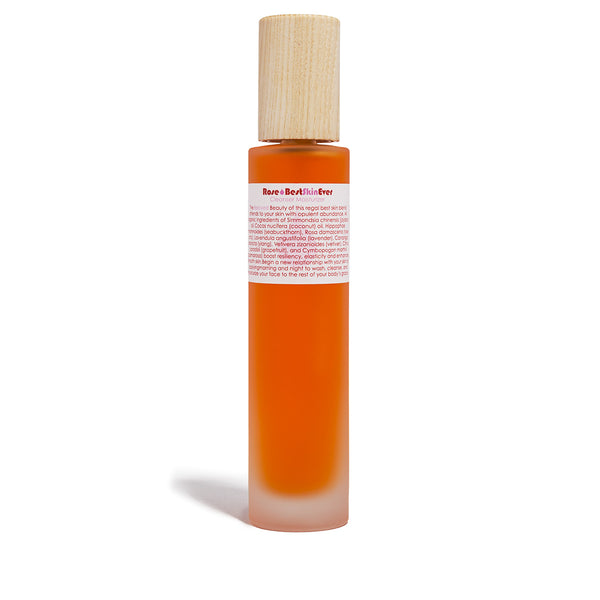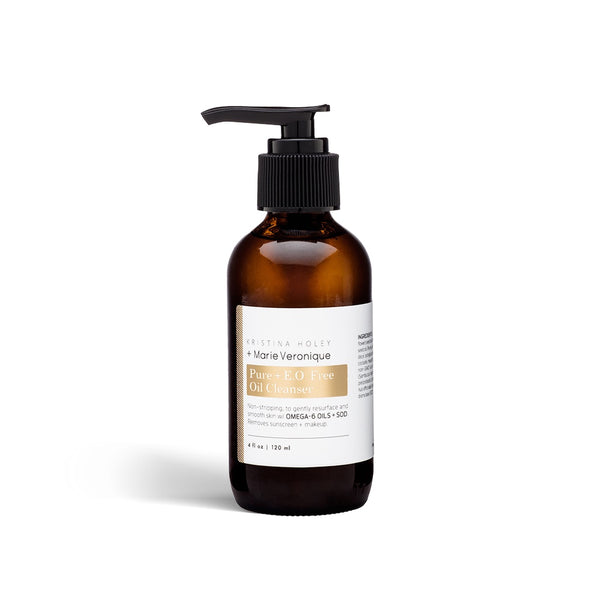Here at CAP, we believe in setting aside a few minutes each evening to cleanse off the day, both physically and energetically. Granting yourself extra time to give your face some love can be truly transformational. Ever notice how much more fresh and beautiful you feel when you wake up after having done a deep cleanse the night before, as opposed to passing out on your bed, makeup and all? Quite the difference.
The ways in which we clean our face have transformed over the years. From your grandmother’s cold cream to the squeaky clean foaming cleanser of your teenage years, there have always been a variety of ways to get your skin clean. One of these methods that has taken the spotlight recently in the modern skincare world is the process of oil cleansing. While this method may seem totally new to some, using oil to clean and purify the skin has actually been around for thousands of years. Ancient cultures from around the world used some of the same natural plant oils that we use today to remove dirt and grime from the skin. What’s old is new again.
So, how does oil cleansing work? It begins with the basic chemistry principal of “like dissolving like”. So, oil actually dissolves the excess oil that builds up on our skin throughout the day that clogs our pores. Our skin naturally produces a type of oil itself, called sebum. This beneficial substance maintains our skin’s natural pH balance while also protecting and moisturizing. Many harsh traditional cleansers not only remove dirt and grime that have accumulated throughout the day, but they strip the skin of it’s own sebum, which can wreak havoc overtime. Without this protective film of oil, the skin is not only more susceptible to bacteria and the possibility of infection (pimples and inflammation), but it also sends a message to your skin that it needs to produce more oil, resulting in excess oil. And more breakouts!
Oil cleansing thoroughly removes unwanted oil and grime, while simultaneously moisturizing the skin and protecting it. And, it’s great for every skin type. From normal skin to severe acne, everyone can benefit from cleansing with a proper oil.
First, pick an oil cleanser to use. A couple of the brands we carry at CAP have crafted some really next level oil cleansers. Pick one from the list below based on your skin type.
Normal/dry/sensitive: Tata Harper Nourishing Oil Cleanser
Oily/congested: In Fiore Lustra Illuminating Floral Essence
1. Begin with a dry face. Take about a quarter sized amount of your oil of choice and apply it evenly across your whole face, right on top of makeup/sunscreen.
2. Start at the chin and work your way up around the mouth, jaw, cheeks, eye area and end up at the forehead, using small circular motions to massage the oil deeply into your skin.
3. You can incorporate the same kind of movements you use when using a normal cleanser. However, this cleansing massage should take about two to three minutes if possible, so really take the time to massage the oil in across the face. Using oil to massage your skin ALSO helps promote blood circulation and lymph drainage, reduces the appearance of fine lines and wrinkles, softens pores to help decongest the skin and is also incredibly relaxing.
4. Wet a washcloth with hot water (you want it to be a steamy and warm, but not scalding) and press it against your face. Hold it against your face for a minute, to steam and activate the oils. Breathe deep, then buff away thoroughly.
5. After making sure the oil is completely removed, you can follow with your usual moisturizing regimen.
6. If you are wearing very heavy makeup, repeat the cleansing process twice.
7. It does takes some getting used to because a lot of us are used to a rinse off cleanser that leaves the skin squeaky clean. This is just a different experience, but if you are doing it right, your skin WILL be sufficiently clean! Give it a try. Your face will thank you.


